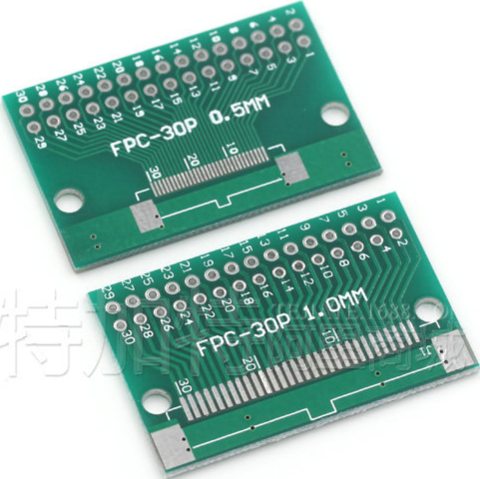Both stencil printing and screen printing can deposit all the solder on the printed circuit board with only one operation step. When the squeegee scrapes over the stencil or screen, the solder paste is squeezed into the template or screen. In the opening, this part of the solder paste is in contact with the circuit board. It is very important to precisely align the openings of the template or screen with the positions of all the solder pad patterns. Therefore, for each circuit, a corresponding template or screen must be manufactured. The most important parameters in smt solder paste printing are the uniformity of speed, the speed of the squeegee, the pressure, the angle of the squeegee, the overhead height of the squeegee, and the speed of separation from the circuit board.
The solder paste must be thixotropic, which means that its teaching degree is constantly decreasing during the application process. The thixotropic solder paste has a special internal structure, which is mechanically acted upon. When this shearing force is removed and begins to recover, its internal structure is destroyed.

This property can ensure that the solder paste flows well on the circuit board. The advantages of stencil printing over screen printing are that it has a relatively long service life, a higher and easily controlled solder paste thickness, and a higher accuracy due to its smaller overhead height. Overhead height refers to the distance between the screen or template and the surface of the circuit board.
The template is usually made of plated metal or stainless steel. Most of the circuit patterns on the template are formed by laser cutting, but it can also be obtained by mechanical etching on both sides. The template is glued with epoxy resin to a rigid cast aluminum or stainless steel frame, which is connected to the printing machine, and the template must be precisely adjusted to maintain precise alignment with the circuit board during use. Under the condition of a certain template thickness and squeegee hardness, by maintaining good edge alignment, template printing can obtain a larger thickness of the warm solder paste layer compared with screen printing, and the surface between the solder paste and the substrate Tension (adhesion) can ensure that the solder paste is still adhered to the circuit board when the squeegee passes through the screen or template surface and the squeegee is separated from the circuit board.
1. Circuit board fixing fixture
The printed circuit board fixture fixes the circuit board during the printing process. It often provides this function through a vacuum drawing board located under the template. The purpose of using the vacuum drawing board is to provide the circuit board during the printing process. Support and keep it level. If there are some parts under the circuit board, you need to leave space or place brackets to protect these parts in the designated position of the vacuum drawing board. It is recommended to use the alignment marks marked on the template and the circuit board to align the circuit board fixture and the template well. This alignment mark is also called a datum.
2. Scraper
The squeegee can be made of thin metal. The adjustment of the squeegee can be evaluated by placing a piece of paper underneath and forming a uniform layer of solder paste on the paper to determine whether the setting is correct and the pressure generated is uniform . The best printing method is to use less pressure at the beginning of printing and not make the pressure too high, because this may damage the template. When printing, the solder paste should be rolled in front of the squeegee, instead of leaving a layer of solder paste on the template. If there is a layer of solder paste on the template, it means that the pressure of the squeegee is too small. The diameter is about 15mm. Polyurethane scrapers have trailing edges or diamond-shaped cross-sections. There are several hardnesses. All types of scrapers require sharp edges. Due to the continuous wear of the edges during use, periodic re-sharpening is required. .
Various reference materials describe the contact angle of the squeegee, and its range is 45-80°. Generally, a larger printing angle will make the solder paste pass through the template poorly, and a smaller printing angle will lead to alignment. decline. When the solder paste is deposited on the circuit board, the template behind the squeegee will immediately lift (rebound) and return to the original overhead position, otherwise the template will erase the solder paste deposited on the circuit board.
Describes the process of using a laser cutting process to make a template. This template can have more control over the amount of solder paste deposited on the solder pads of the PCB circuit board. This control becomes even more important when pitching components. Since there is no cleaning step to remove potential solder balls, the requirements for printing deposition are bound to be higher.